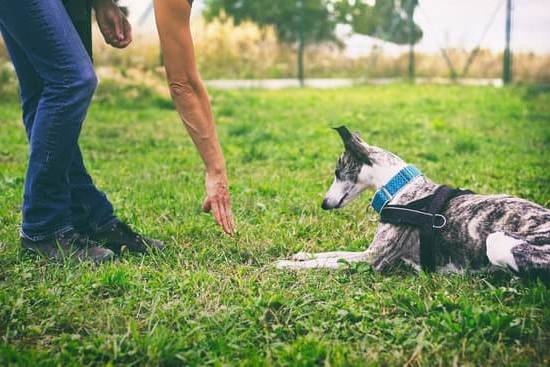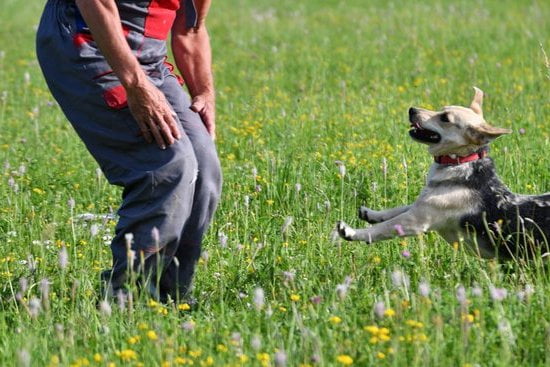Service dogs play a crucial role in the lives of individuals with disabilities, providing much-needed assistance and support. Training service dogs is a comprehensive process that involves patience, dedication, and specific techniques to ensure that these animals are equipped to help their owners effectively.
This article will explore the significance of service dogs, the benefits of training them, the qualities of a good service dog candidate, finding a suitable training program, basic commands and skills, the role of the owner in training, challenges and obstacles, as well as legal rights and responsibilities.
Service dogs are trained to perform various tasks such as guiding individuals who are blind or visually impaired, alerting those with hearing impairments to important sounds, retrieving items for people with mobility issues, and providing physical support for those with balance problems. Their importance cannot be overstated as they significantly improve the quality of life for their owners by increasing independence and reducing reliance on others.
The benefits of training a service dog are manifold. Not only do these animals provide practical assistance with daily tasks, but they also offer emotional support by alleviating anxiety and stress. Additionally, service dogs enhance safety by alerting their owners to potential dangers. Finding a suitable candidate to undergo service dog training is essential as it ensures that the dog possesses the necessary temperament and abilities to carry out its duties effectively.
The Benefits of Training a Service Dog
When considering the benefits of training a service dog, it is important to recognize the profound impact these animals can have on the lives of individuals with disabilities. Service dogs are specially trained to assist people with physical or mental impairments, providing them with a level of independence and support that is truly life-changing.
Enhanced Quality of Life
One of the primary benefits of training a service dog is the enhanced quality of life it offers to individuals with disabilities. These animals are trained to perform specific tasks that help their owners navigate daily tasks and activities, such as opening doors, retrieving items, alerting to medical issues, and providing emotional support. As a result, service dogs can significantly improve their owner’s ability to live independently and participate in various aspects of daily life.
Emotional Support and Companionship
In addition to their practical assistance, service dogs also provide valuable emotional support and companionship to their owners. Many individuals with disabilities experience feelings of isolation or loneliness, but having a well-trained service dog by their side can offer comfort and alleviate some of these challenges. The bond between a person and their service dog often becomes an integral part of their overall well-being.
Mitigating Symptoms and Increasing Safety
Furthermore, training a service dog can lead to the mitigation of symptoms related to certain disabilities while also increasing safety for the individual. For example, individuals with mobility impairments may benefit from the balance and stability assistance provided by a skilled service dog. Likewise, individuals with conditions such as autism or PTSD may find relief from anxiety or panic attacks through the presence and interventions of their trained service dog.
As we continue exploring the benefits of training a service dog, it becomes evident that these animals play an invaluable role in supporting individuals with disabilities in various aspects of their lives. From enhancing quality of life to providing emotional support and increasing safety, the positive impact of a well-trained service dog cannot be overstated.
The Qualities of a Good Service Dog Candidate
As the demand for service dogs continues to rise, it is essential to understand the qualities of a good service dog candidate. These animals play a crucial role in assisting individuals with disabilities, and their temperament and skills are vital in ensuring their effectiveness in fulfilling their duties.
When seeking a potential service dog candidate, there are specific qualities to consider. First and foremost, a good service dog candidate should display a calm and even-tempered demeanor. This is important as they will often be in unpredictable and potentially stressful situations while providing assistance to their owner. Additionally, they should exhibit intelligence, willingness to learn, and adaptability to various environments and tasks.
It is also essential for a potential service dog candidate to possess good physical health and stamina. Service dogs undergo rigorous training and must be capable of performing tasks that assist their owner in daily activities. This includes but is not limited to retrieving items, opening doors, providing stability or balance support, or alerting their owner to potential dangers.
Finally, a suitable candidate for training as a service dog should demonstrate strong socialization skills. They will need to interact with other individuals and animals while remaining focused on their responsibilities. Proper socialization can help prevent fear or aggression in various situations, ensuring the safety of both the dog and its owner.
- Calm demeanor
- Intelligence and willingness to learn
- Good physical health and stamina
- Strong socialization skills
In order to ensure that these qualities are present in a potential service dog candidate, it is recommended for individuals or organizations searching for such animals to work with reputable breeders or rescue organizations that specialize in training service dogs. These entities can help identify dogs with the necessary traits and provide assistance throughout the evaluation process.
Ultimately, identifying suitable candidates for training as service dogs is crucial in enabling these animals to fulfill their essential roles effectively. With the right qualities present in a potential candidate, they can undergo specialized training programs tailored to equip them with the skills needed to support individuals with disabilities.
Finding a Training Program for Service Dogs
When it comes to training service dogs, finding the right program is vital. There are several options available for individuals who are interested in training a service dog, and it’s important to carefully consider the best fit for both the dog and the owner. Here are some options to consider when looking for a training program:
- Professional Training Organizations: There are organizations that specialize in training service dogs for specific purposes, such as guide dogs for the visually impaired or mobility assistance dogs. These organizations often have established programs and experienced trainers who can provide specialized training tailored to the needs of the individual and their disability.
- Private Trainers: Some individuals may opt to work with private trainers who specialize in service dog training. This allows for personalized attention and one-on-one instruction, which can be beneficial for both the dog and the owner.
- Owner-Training Programs: For those who prefer a more hands-on approach, there are owner-training programs that provide guidance and resources for individuals who want to train their own service dog. These programs typically offer support and instruction to help owners train their dogs to perform specific tasks related to their disability.
It’s important to thoroughly research and evaluate any potential training program before making a decision. Consider factors such as the program’s reputation, success rate, cost, and compatibility with your specific needs.
Ultimately, finding the right training program for your service dog is crucial in setting both you and your canine companion up for success. Whether you choose a professional organization, private trainer, or owner-training program, investing time and effort into finding the best fit will ultimately lead to a capable and reliable service dog.
The Basic Commands and Skills for Service Dogs
Service dogs are highly trained animals that provide invaluable assistance to individuals with disabilities, such as the visually impaired, those with mobility issues, and individuals with certain medical conditions. These dogs are taught a wide range of commands and skills to help their owners navigate their daily lives and improve their overall quality of life.
Basic Commands
Service dogs are taught a variety of basic commands that are essential for helping their owners with everyday tasks. These commands include “sit,” “stay,” “come,” and “heel.” Additionally, service dogs are trained to follow specific cues that indicate when it is safe to cross the street, retrieve items, or open doors.
Specialized Skills
In addition to basic obedience training, service dogs also learn specialized skills based on the needs of their owner. For example, a hearing assistance dog is trained to alert its owner to important sounds, while a psychiatric service dog may be taught specific tasks to assist its handler during times of distress. Other tasks might include retrieving medication, providing stability for individuals with balance issues, or alerting someone if their owner needs assistance.
Public Access Skills
Service dogs must also be proficient in public access skills in order to accompany their owners in various public places. This includes remaining calm and focused in crowded areas, ignoring distractions such as food or other animals, and being well-behaved when interacting with people. Furthermore, they need to be comfortable riding in different modes of transportation such as buses or planes.
Training a service dog requires dedication and consistency from both the professional trainers and the future owners. The process involves careful instruction tailored to the individual needs of the person who will benefit from the dog’s support. The comprehensive training equips these remarkable animals with the ability to truly make a difference in the lives of those they serve.
The Role of the Owner in Training a Service Dog
Owners are responsible for creating a nurturing and supportive environment for their service dogs during the training period. This includes providing a safe space for the dog to learn and practice new commands and skills. Additionally, owners need to ensure that their service dog is receiving proper nutrition, exercise, and rest to maintain physical health, which is essential for optimal performance during training sessions.
Furthermore, owners must be committed to consistently practicing commands and skills with their service dogs. This can involve dedicating time each day to reinforce what the dog has learned in formal training sessions. By being actively involved in the training process, owners can strengthen the bond with their service dogs while also improving obedience and reliability.
| Training Responsibilities | Owner’s Role |
|---|---|
| Providing consistent reinforcement | Create a nurturing and supportive environment |
| Caring for physical well-being | Ensure proper nutrition, exercise, and rest |
| Practicing commands and skills | Dedicate time each day for practice sessions |
Challenges and Obstacles in Training a Service Dog
Training a service dog can be a rewarding experience, but it also comes with its fair share of challenges and obstacles. One of the main challenges in training a service dog is the time and commitment required. It takes an average of 18-24 months to fully train a service dog, and this requires consistent and dedicated effort from both the owner and the dog.
Another obstacle that owners may face when training their service dog is dealing with distractions. Whether it’s other animals, loud noises, or crowded spaces, service dogs need to remain focused on their tasks at all times. This can be particularly challenging in public settings, where there are numerous potential distractions.
Additionally, some breeds may be more challenging to train as service dogs than others due to their temperament or energy levels. For example, while Labrador Retrievers and Golden Retrievers are commonly chosen as service dog candidates due to their intelligence and calm nature, breeds such as Terriers or Huskies may require more intensive training due to their high energy levels and independent nature.
Overall, while there are certainly challenges and obstacles in training a service dog, with patience, perseverance, and the right resources, many owners find the process incredibly rewarding. Seeing the positive impact that a well-trained service dog can have on their lives makes overcoming these challenges well worth it.
| Challenges | Obstacles |
|---|---|
| Time commitment | Dealing with distractions |
| Breed temperament | High energy levels |
The Legal Rights and Responsibilities of Service Dog Owners
In conclusion, training service dogs is a crucial process that can significantly improve the quality of life for individuals with disabilities. The importance of service dogs cannot be understated, as they provide invaluable assistance and support to their owners in various everyday tasks. Furthermore, the benefits of training a service dog go beyond just physical assistance, as these animals also offer emotional and psychological support to their owners.
When looking for a good candidate for a service dog, it is essential to consider qualities such as temperament, intelligence, trainability, and physical capabilities. Finding the right training program for the service dog is also paramount in ensuring that the animal receives proper guidance and instruction. Basic commands and skills are fundamental aspects of a service dog’s training, as they enable the animal to assist its owner effectively in various situations.
The role of the owner in training a service dog should not be overlooked, as consistent reinforcement and positive interaction with the animal are crucial for its development. Although challenges and obstacles may arise during the training process, perseverance and patience are key in successfully overcoming them.
Understanding the legal rights and responsibilities of service dog owners is equally important to ensure that both the owner and the animal are protected under the law while navigating public spaces and other environments. Overall, investing time and effort into properly training a service dog can result in an incredible bond between the animal and its owner while improving their overall well-being.
Frequently Asked Questions
How Do I Teach My Dog to Be a Service Dog?
To teach your dog to be a service dog, begin by ensuring that they have the right temperament and obedience skills. Then, enroll them in a reputable service dog training program or work with a professional trainer who has experience in training service dogs.
How Many Commands Must a Dog Learn to Be a Service Dog?
A service dog must learn a variety of commands to effectively assist their handler. These commands can include basic obedience cues such as sit, stay, and come, as well as more advanced tasks like retrieving items, opening doors, and providing emotional support during anxiety attacks.
How Do You Train a Service Dog for Anxiety?
Training a service dog for anxiety involves desensitizing the dog to triggers that may cause anxiety in their handler, teaching the dog to provide physical comfort, and learning tasks that help alleviate the symptoms of anxiety. It’s important to work with a trainer who understands the specific needs of individuals with anxiety disorders.

Welcome to the blog! I am a professional dog trainer and have been working with dogs for many years. In this blog, I will be discussing various topics related to dog training, including tips, tricks, and advice. I hope you find this information helpful and informative. Thanks for reading!





